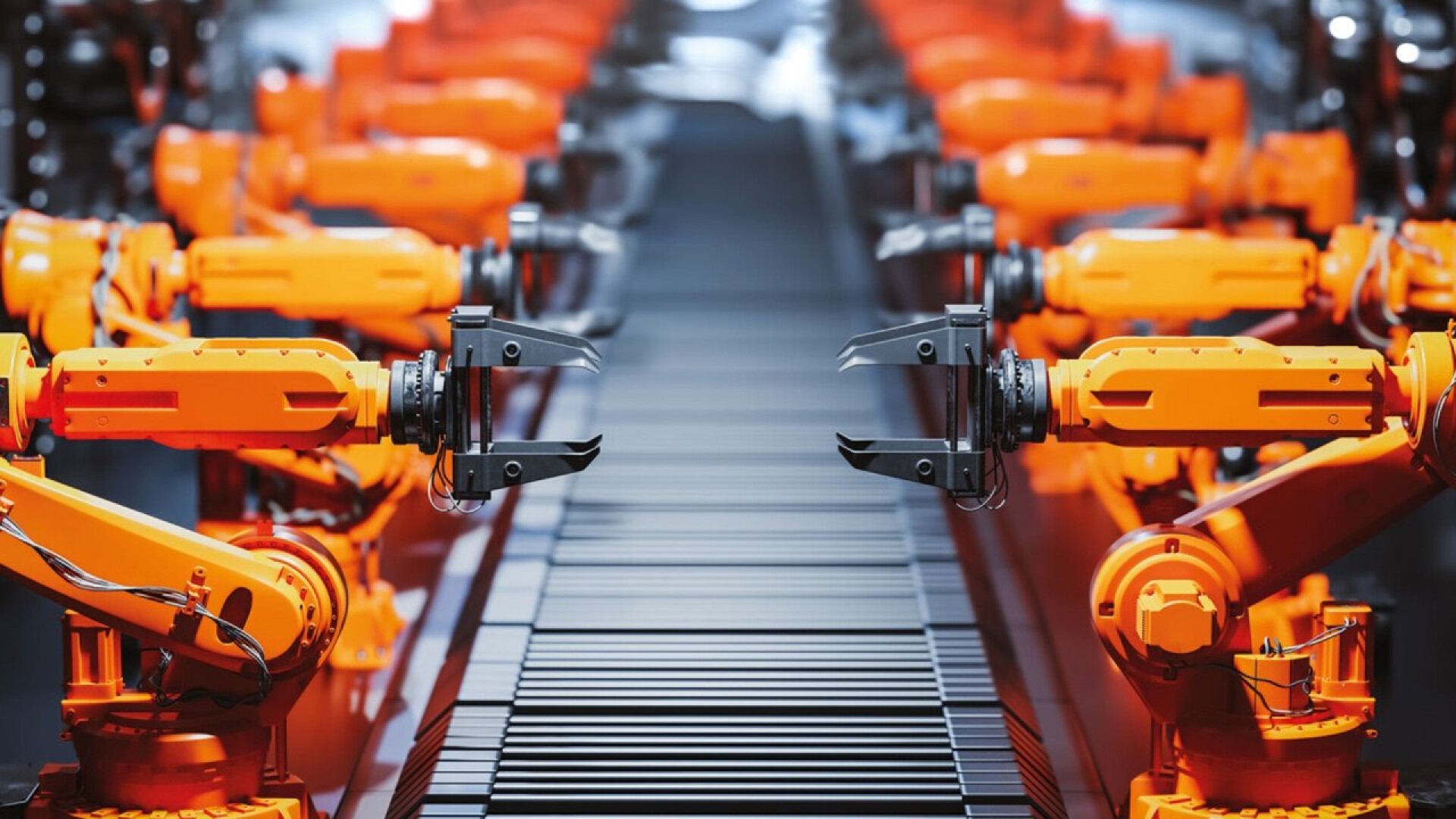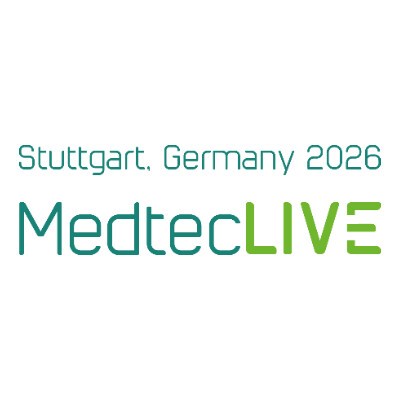Transformation: Companies opt for medical technology
At 4.6 per cent per year, the healthcare industry has grown much faster than the economy as a whole over the last ten years - partly due to digitalisation and automation. Companies from outside the industry are therefore deciding to transform their business into medical technology.
This can also be observed among automotive suppliers. In addition to the decline in sales during the Corona times, the progressive development away from combustion engines is also a reason for companies to invest in medical technology to expand business areas.
But companies also see the potential of the sector on an international level. In 2021, for example, the Google parent Alphabet caused a stir. It founded the company Isomorphic Labs. Under the leadership of Demis Hassabis, the process of drug development is to be redesigned by means of artificial intelligence (AI). © Matthias Dietz | Dietz
© Matthias Dietz | Dietz
Companies in the transformation process
One of the pioneers on the topic of transformation from the automotive industry is Dietz GmbH from Coburg. The medium-sized company produces technical precision springs and wire bending parts for various industries. The goal of the transformation into medical technology was to compensate 1:1 for the turnover in the automotive sector with turnover in other areas. "Entering the medical technology sector is a long journey. However, we have been able to increase our share of sales in medical technology from 0 to 18 per cent in the last 20 years. The expectations of customers in medical technology are not as different from other areas as one might think. High-quality requirements from automotive technology are just as common as high cleanliness requirements. In some cases, the regulations are still a little more difficult to implement," says Matthias Dietz, Managing Director of Dietz. © Felix Hess | OECHSLER
© Felix Hess | OECHSLER
But transformation into medical technology is not limited to the automotive industry. The medium-sized company OECHSLER, headquartered in Ansbach and focusing on the production of plastic parts and industrial 3D printing, has been actively engaged with the medtech industry since 2021. "We have a clear target that is understandable, measurable, achievable, and time-bound. Derived from this, the Course Healthcare strategy was developed to show us the way to achieve this target. We have set up our reform programme, 'Course Healthcare', with approx. 50 measures and a change manager specially released for this purpose. At the same time, OECHSLER has invested a high single-digit million-euro amount in the infrastructure to be able to make appropriate offers to the industry. In summary: own procedures, own processes, own infrastructure for medical technology. A little bit of medical technology is not enough, the more consistent, the more successful," explains Felix Hess, Vice President Sales Healthcare at OECHSLER.
What is part of the transformation?
Both a change and a reorientation in medical technology should be well reflected and planned. Newcomers in particular are often surprised by the mechanisms and high regulation of the industry. "In addition to capital and sufficient infrastructure, a suitable staff, documentation, and production base is needed. Several years of testing and investigation phases can pass before a product is launched on the market and clinical suitability is established," explains Ulf Hottung, sector manager for medical technology at igus.
The plastic plain bearing manufacturer igus also discovered medical technology as an industry for itself more than ten years ago. The company produces standard machine components for manufacturers of medical equipment, medical furniture, laboratory technology, mobility, and rehab as well as dental equipment. Their goal is to respond individually to customer issues to offer them better solutions. "This starts with the colouring of our components. Products in medical technology are predominantly white, which requires a special approach for plastic articles, as the colour changes the material properties such as friction and wear," explains Hottung.
Support at different levels
The transform_EMN project, for example, provides a remedy for the entire process, especially for small and medium-sized enterprises (SMEs). The aim is to establish a regional transformation network in the Nuremberg Metropolitan Region that supports companies in positioning themselves competitively in the mobility transition in the future. The large-scale project is funded by the Federal Ministry of Economics and Climate Protection (BMWK) with 6.6 million euros. Within the project, business ideas are being developed and technology and knowledge transfer for vehicle electrification as well as digitalisation and resource-efficient production are being promoted. On the employee side, the focus is on securing employment in the region through qualification. For concrete implementation, the project offers free networking opportunities, events, and workshops. Not to be neglected is also the accompanying public relations work with an information campaign and an interactive exhibition for a professional external appearance of companies.
OECHSLER has also set itself the goal of the latter to be perceived even better in the healthcare industry. "We are investing in a total of four pillars. The first is the clean room. When designing our cleanrooms, we paid particular attention to sustainability and environmental protection. There were three areas we focused on: ecological construction, energy-efficient equipment, and resource efficiency. The second pillar is personnel: Here we also work with universities to recruit the right young people. The third pillar concerns processes and procedures. And point four is our external image," explains Hess.
 © Robert Lanig | transform_EMN
© Robert Lanig | transform_EMN
Automotive and Medtech
As the medical technology cluster for the transform_EMN project, Medical Valley EMN e.V. supports the realisation of the Automotive Health innovation platform. "Within this framework, Medical Valley takes on the planning and implementation of various networking and specialist events that give supplier companies impetus for new business fields in the medical technology sector. This includes information on entry hurdles such as regulatory requirements, but also arranging contacts with potential customers or cooperation partners," explains Robert Lanig, head of the transform_EMN project of the Nuremberg Metropolitan Region.  © Anna Werner | Medical Valley EMN e.V.
© Anna Werner | Medical Valley EMN e.V.
"Partly we work individually with the companies, depending on the status of the planning, we first look at the different possibilities and work out a strategy for diversification as well as an implementation plan in several sessions. In some cases, the companies are looking for cooperation partners and customers; here we provide support by arranging contacts in our network. In addition, exchanges of experience between the companies are planned," adds Anna Werner, Managing Director of Medical Valley EMN e.V. Within the transformation, diversification is primarily a building block for risk reduction, but new opportunities for growth can also arise through the expansion of markets. "In addition to the automotive industry, the region is also characterised by a pioneering position in medical technology, a strongly growing industry. There are already many examples of diversification in the European Metropolitan Region, both among SMEs and large corporations. The transdisciplinary exchange of automotive and healthcare and thus the integration of medical products and healthcare services into the "car of the future" offers further potential," Werner emphasises.  © Christopher Boss | NürnbergMesse
© Christopher Boss | NürnbergMesse
"81 per cent of automotive suppliers are planning to diversify. Medical technology is exciting here because it has high profit margins. There is a lot of potential for companies, and at the same time start-ups are creating opportunities in the region," adds Christopher Boss, Managing Director of MedtecLIVE with T4M at NürnbergMesse.However, help with the transformation is also available beyond the region. The management consultancy Sananet helps companies gain a second foothold in the healthcare sector by educating them about the market mechanisms of medical technology, providing decision support on medical products, and advising as needed. From medical start-ups looking for strategic partners, to mid-sized medical technology companies looking for global distribution channels, to industrial clients looking to enter the healthcare sector and seeking new business opportunities.
Companies from the automotive industry have a decisive advantage in the transformation. For medical products, there are similar quality requirements as for manufacturers and suppliers from the automotive industry. In addition, little conversion is necessary on the technical side since machines from the automotive industry can usually also be used for the manufacture of other products.  © Tilo Stolzke | Sananet
© Tilo Stolzke | Sananet
"The challenge I observe in the transformation process of automotive manufacturers is the rethinking of production. In automotive, individual parts are usually manufactured that are incorporated into components and are still far from the end product in the production process. In medical technology, on the other hand, more complex components and entire products are manufactured," adds Tilo Stolzke, Managing Director of Sananet.
Transformation to medical technology – but how?
For the successful transformation to medical technology to take place, it is important to deal with the challenges involved. Especially the industrialisation phase can offer difficulties for companies at the beginning. Required components must be secured early enough. To keep manufacturing costs low, strategic purchasing should be carried out, that is, with an overview of the purchasing markets. After that, it makes sense to make a sample of the component for testing purposes already in the early product development phase. Not to be overlooked is the creation of an infrastructure to produce medical products for the planned quantities.
Furthermore, medical technology also places special demands on materials, especially for products in and on humans. "At igus, for example, we produce a plastic plain bearing made of biocompatible material. For this, we have changed our manufacturing process and oriented it to food technology. In concrete terms, this means several cleaning processes when the material changes or the machines come to a standstill in order to meet industrially clean conditions. Furthermore, there is an external intermediate step in which our components are cleaned and sterilely packaged," explains Hottung.
OEM partnership creates safety
The step into medical technology tends to involve certain risks for companies from outside the sector. Until the product is ready for the market, it is quite a long and demanding path that requires a lot of capacities. Therefore, cooperation with a partner during the product development process can make sense. Depending on the product's field of application, the specific approvals in medical technology are a hurdle for companies. "We recommend manufacturing partial components at the beginning. In theory, no approval is required for this, as this can be taken over by the actual medical device manufacturer. However, larger manufacturers usually already expect the so-called ISO 13485 standard, which is easily surmountable for companies from the automotive sector. If more complex components or OEM "Original Equipment Manufacturer" products are to be manufactured, then the ISO 13485 standard is the rule," explains Stolzke from Sananet. The ISO 13485 standard, last adapted in 2016, "Medical devices: Quality management systems - Requirements for regulatory purposes" contains requirements for quality management systems that manufacturers and suppliers of medical devices must fulfil when developing, implementing and maintaining management systems for the medical device industry. "This places a high demand on companies and means, among other things, accurate documentation of processes. However, if the supplier complies with all guidelines, the separate demands are also rewarded by the customer," adds Hottung.
In conclusion, medical technology offers opportunities but also challenges for companies. Approval, in particular, is a hurdle before the medical product is even launched on the market. However, once this is overcome, the transformation can be a rewarding change for many companies.


